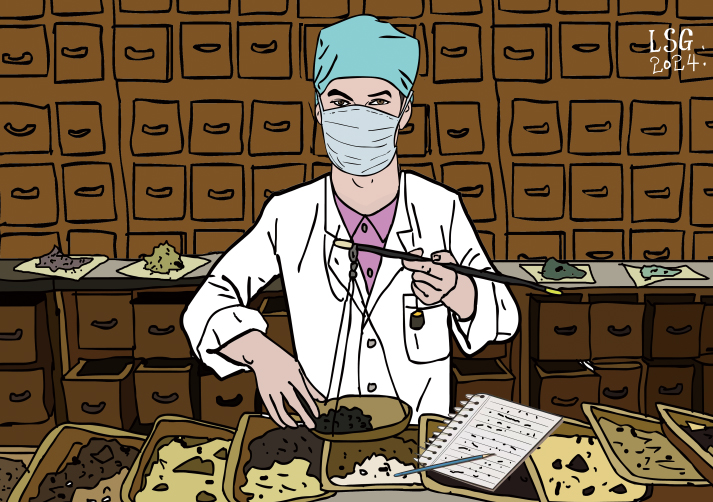| Lifestyle |
| A witness of cultural exchange | |
|
|
 LI SHIGONG
Since China proposed the Belt and Road Initiative 11 years ago, aiming to boost connectivity along and beyond the ancient Silk Road routes, many questions have been raised: What does the initiative mean to the countries along the ancient Silk Road? What is its historical background? What cultural carriers can support it? These issues are undoubtedly major topics that require specialized research. However, cultural exchanges certainly need to find some suitable carriers. As an Iranian researcher at a Chinese university, I feel deeply that, in studying cultural exchanges between China and Iran, traditional Chinese medicine (TCM) is an important carrier. China and Iran, known as Parthia and Persia in ancient times, are ancient civilizations with a time-honored history. At the end of the second century B.C., during the reign of Liu Che, Emperor Wu of the Western Han Dynasty (206 B.C.-A.D. 25), and the Parthian Dynasty (247 B.C.-A.D. 224) of Iran, Zhang Qian was sent as an envoy to the Western Regions, including to Parthia. The two countries established contact, and the Silk Road was opened. The earliest mention of Iran in Chinese historical records is in Sima Qian's Records of the Grand Historian, the foundational text of Chinese history dating back to the first century B.C. Iran is called Parthia in that text, and "Parthia" here refers to the Parthian Dynasty. Records of the Grand Historian details the first formal diplomatic exchanges between China and Iran, and also explains the geographical location, national conditions and products of Parthia. According to this book, "The King of Anxi (Parthia) ordered 20,000 horses to greet the envoy of the Han Dynasty at the eastern border." After that, during the Sasanian Dynasty (224-651), from the Three Kingdoms Period (220-280) to the early Tang Dynasty (618-907), Iran and China had increasingly frequent economic and cultural exchanges through the land and maritime Silk Road. Archaeologists have discovered many Sasanian coins in south and east China, including in Guangdong, Fujian and Zhejiang provinces, supporting the existence of bilateral maritime trade. In addition to trade, China and Iran have enjoyed relatively frequent exchanges in medicine. The two countries influenced each other in medicine and other aspects. This influence included importing and exporting medicines between the two countries, translating traditional Chinese medical texts, and exchanging medical personnel. When many countries import fruits, herbs and other products, they include the name of the exporting country in their name for these products. For example, cinnamon is called Chinese tree in Persian, and rhubarb is called Chinese rhubarb. Herbal medicines from China are recorded in many well-known works of Iranian traditional medicine. For example, Avicenna's Classification of Medicine records that 16 kinds of medicines are produced in China. Fifty-nine kinds of medicines recorded in Compendium of Materia Medica, the most comprehensive medical book ever written in the history of TCM, are native to Persia. Some of the Chinese medicinal herb names, including huluma and masidaji, are transliterations of Persian names. TCM is a treasure of Chinese science and technology and a treasure of humanity's traditional medicine. However, in modern times, traditional medicine, including TCM, has experienced challenges in Iran. When this author first started studying TCM in 2009, TCM had yet to be legalized in Iran, and Iran did not recognize academic qualifications in TCM or Western medicine from Chinese institutions of higher learning. Today, TCM has experienced a turning point of development in Iran. It has not only entered Iran's medical system but also had 10 clinical guidelines and operating specifications for its use formulated by Iran's Ministry of Health and Medical Education. Many Chinese medical universities have also been included in the list of internationally renowned universities approved by the ministry. The main reason why TCM is recognized internationally is its excellent clinical efficacy. TCM has significant and unique advantages in preventive medicine, healthcare, rehabilitation, and other fields, and is capable of meeting the health needs of modern people. The author is an Iranian researcher with Southwest University in Chongqing Municipality Copyedited by G.P. Wilson Comments to taoxing@cicgamericas.com |
|
||||||||||||||||||||||||||||||
|
